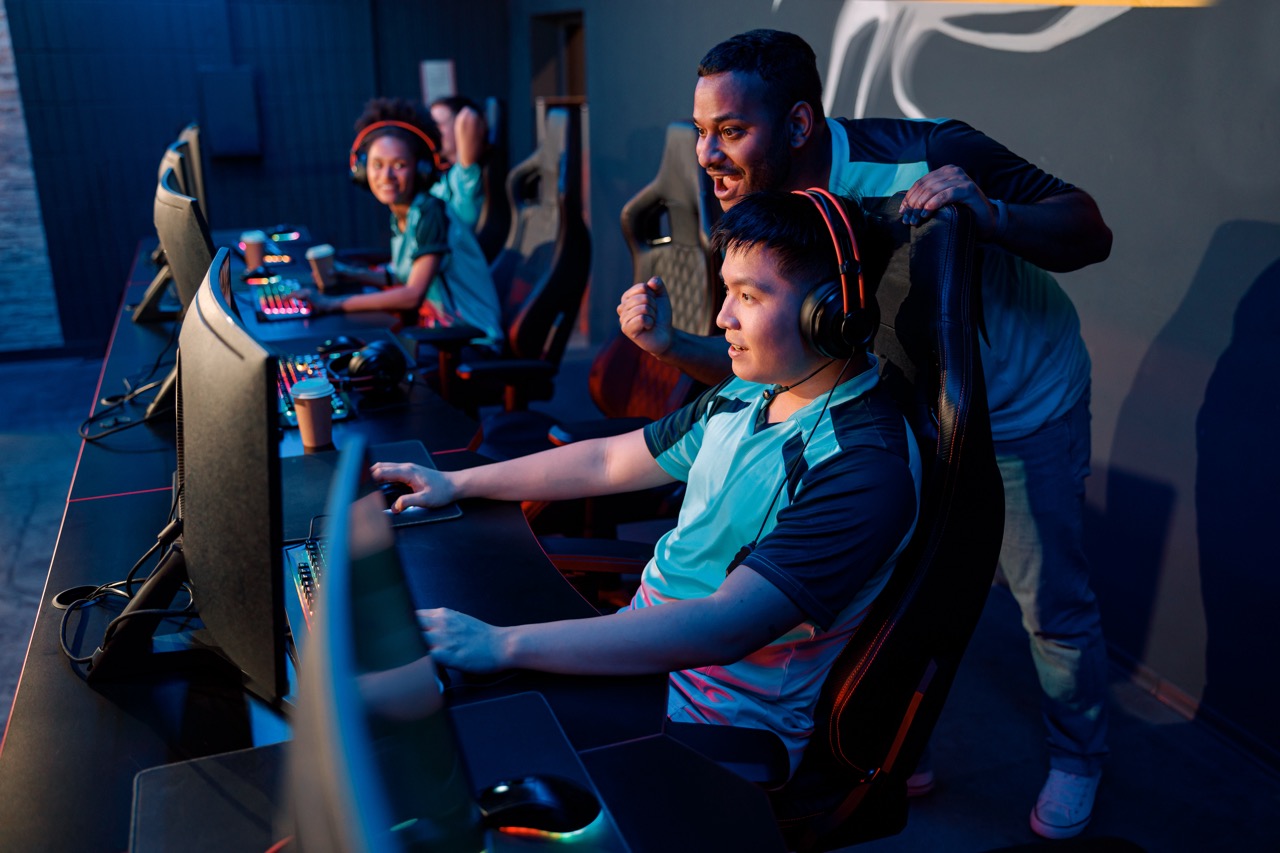Game-to-movie adaptations have been a hot topic for years, often sparking excitement and trepidation among fans. While some films manage to capture the essence of their source material, the majority seem to fizzle out, leaving audiences disappointed. So, why do most game-to-movie adaptations fail? This article dives into the various factors contributing to the disheartening track record of these adaptations, exploring everything from storytelling challenges to the ever-looming shadow of fan expectations.
The Video Game Curse: Why Adaptations Stumble
Video games are a unique form of entertainment, providing immersive gameplay and interactive experiences that films simply can’t replicate. When a film attempts to translate this experience, it often falls flat. The initial challenge is the discrepancy between the two mediums; games allow players to explore vast worlds at their own pace, while movies have a fixed runtime to convey a story. This limitation can force filmmakers to condense complex narratives, resulting in a loss of depth and nuance.
Moreover, many adaptations fail to grasp the core elements that made the original game appealing. Instead of focusing on character development, world-building, or the thematic essence of the game, adaptations often prioritize action and visual spectacle. This can lead to a disjointed narrative that doesn’t resonate with either fans of the game or newcomers to the story.
Another issue is the over-reliance on nostalgia. Filmmakers may think that simply referencing iconic game moments will be enough to win over fans. However, nostalgia alone doesn’t build a good story. When the substance is lacking, these references can feel more like empty callbacks rather than meaningful connections to the source material.
Lastly, the industry’s rush to capitalize on popular gaming franchises often leads to hasty projects with little time to develop a coherent vision. As a result, many adaptations feel more like cash grabs than carefully crafted films, further alienating audiences. This cycle of rushed production and lack of genuine investment in the material is a significant factor in the ongoing failure of game-to-movie adaptations.
Storytelling Woes: Games vs. Movies Explained
At the heart of the struggle between video games and movies lies a fundamental difference in storytelling techniques. Video games often employ nonlinear narratives, allowing players to experience the story from various angles or perspectives. This interactivity is a key draw for gamers, as they can shape the narrative through their choices. In contrast, films are linear and must follow a structured format, which can stifle the complexity that gamers have come to appreciate.
Additionally, video games may have several hours of gameplay to flesh out characters and their motivations. This depth is often sacrificed in adaptations, where time constraints mean that character arcs may feel rushed or underdeveloped. When you only have a couple of hours to tell a story that might have taken dozens of gameplay hours to unfold, something important will inevitably be lost in the shuffle.
Another storytelling woe arises from character agency. In a game, players often feel a personal connection to their character because they actively make choices that impact outcomes. In movies, viewers are passive observers, which can diminish their emotional investment. If the film doesn’t find a way to translate that agency into a relatable experience, it can lead to audiences feeling disconnected from the characters and their journeys.
Finally, filmmakers frequently overlook the importance of tone. Many games blend humor, tragedy, and action in a way that resonates with players. When adaptations attempt to shoehorn a specific tone or style, it can feel forced and out of place, further alienating fans. To succeed, adaptations need to find a way to honor the original game’s tone while also making it palatable for a wider audience.
The Art of Gameplay: How It Gets Lost in Translation
Gameplay is arguably the essence of any video game. The interactions players have with the game mechanics create a rich tapestry of experiences that a film simply can’t emulate. When translating this to the big screen, the cinematic medium tends to overlook the nuances of gameplay, resulting in a film that feels flat and uninspired. Instead of showing how a character’s skills and abilities manifest in gameplay, films often resort to simplistic action sequences that fail to capture the spirit of what made the game enjoyable.
Moreover, game mechanics often serve as storytelling devices. For instance, the puzzle-solving aspects in a game might reveal insights about characters or themes. In a movie, however, those mechanics might be entirely omitted or simplified, leaving viewers with a less engaging narrative. Audiences familiar with the game may find themselves questioning why key elements were left out, while newcomers might struggle to grasp the plot’s context without these essential pieces.
Additionally, the focus on visual effects in game adaptations can create a false sense of excitement. While stunning graphics and action sequences can draw viewers in, they often detract from character development and meaningful storytelling. When the visual spectacle overshadows substance, audiences can feel as though they’re watching a hollow experience rather than a cohesive narrative.
Lastly, the collaborative aspect of gaming is often absent in film adaptations. Games typically involve teamwork, strategy, and player choices that lead to unique outcomes, fostering a sense of community and shared experience. Films, on the other hand, focus on individual narratives and often lack the communal aspect of gaming. This disconnection can make adaptations feel less impactful for audiences who thrive on the shared experiences that come with playing games together.
Fan Expectations: Can Anyone Really Win?
One of the most daunting challenges facing game-to-movie adaptations is the high expectations of fans. Gamers are often deeply invested in their favorite franchises, having spent countless hours exploring worlds and developing connections with characters. When a beloved game is adapted into a film, it invites scrutiny from a passionate fanbase that has a clear vision of what the story should convey. Unfortunately, this can place immense pressure on filmmakers to meet these expectations, often leading to disappointment.
The problem arises when filmmakers attempt to appease fans by cramming in as many references and Easter eggs as possible, often at the expense of a coherent narrative. While these nods to the source material may please some viewers, they can alienate others who are looking for a well-crafted story. Balancing fan service with original storytelling is a tightrope walk that many adaptations fail to navigate successfully.
Additionally, the challenge of appealing to both die-hard fans and casual viewers complicates the equation even further. A film that leans heavily into fan service may end up being confusing for newcomers, while a more generalized approach risks alienating the core audience. This duality can lead to a diluted final product that fails to satisfy either group, leaving everyone feeling let down.
Ultimately, the fear of disappointing fans can lead to an over-cautious approach in storytelling. Filmmakers may shy away from taking creative risks that could result in a unique adaptation. Rather than exploring new angles or innovative narratives, they may choose to play it safe and recycle familiar plot points. This reluctance to break new ground can leave adaptations feeling stale and uninspired.
Casting Choices: Why They Often Miss the Mark
Casting is another critical aspect where game-to-movie adaptations frequently stumble. Finding the right actors to embody the beloved characters from games is no small feat. Filmmakers often face pressure to cast big-name stars in order to attract wider audiences, which can lead to mismatched performances. When the star power overshadows the essence of the character, the adaptation can feel disjointed and unfaithful to fans.
Moreover, the physicality of characters in games is often lost in translation. Many video game protagonists have distinct looks and personalities that are fundamentally tied to their design. When casting choices stray too far from these established traits, it can create a disconnect for fans who visualize these characters in a specific way. A lack of authenticity in casting can diminish the emotional impact of the story and lead to overall dissatisfaction.
Another issue arises from the portrayal of gender and race in casting decisions. Video games often feature diverse characters, and when adaptations fail to stay true to this diversity, backlash from fans can ensue. If filmmakers prioritize traditional casting over respectful representation, they risk alienating significant portions of the audience and detracting from the character’s authenticity.
Lastly, the chemistry between actors is crucial in bringing characters to life. In games, players build relationships with characters over time, which is often challenging to replicate in a film’s limited runtime. If the cast lacks chemistry or fails to convey the depth of relationships present in the game, the emotional core of the story can feel flat. This disconnect can lead to a lack of investment in the characters, making it harder for viewers to engage with the film.
Lessons from the Past: What We Can Learn Moving Forward
As we dissect the failures of past game-to-movie adaptations, there are valuable lessons to be learned for future projects. First and foremost, adapting a game should involve an appreciation of its core elements—be it characters, story arcs, or gameplay mechanics. Filmmakers need to immerse themselves in the source material to understand what made it special to fans and how to maintain that essence in a new format.
Collaboration with the original creators can also be beneficial. Having input from those who brought the game to life can ensure that adaptations stay true to the original vision while translating it for a cinematic audience. This collaboration can help bridge the gap between gaming and film, fostering a deeper understanding of what resonates with fans.
Moreover, filmmakers should consider focusing on character development and emotional arcs rather than relying solely on action sequences and visual effects. A well-crafted story that emphasizes character growth and meaningful relationships can create a more engaging experience for viewers, allowing them to connect with the film on a deeper level.
Lastly, embracing creativity and taking risks can lead to more compelling adaptations. Instead of sticking rigidly to the source material, filmmakers should explore new narrative angles or innovative approaches to storytelling. By allowing for creative interpretations while respecting the original game, adaptations can surprise and delight audiences, potentially breaking the cycle of disappointment.
While the track record for game-to-movie adaptations may seem bleak, there’s hope for the future. By understanding the challenges and pitfalls that have plagued past efforts, filmmakers can create adaptations that honor the source material










